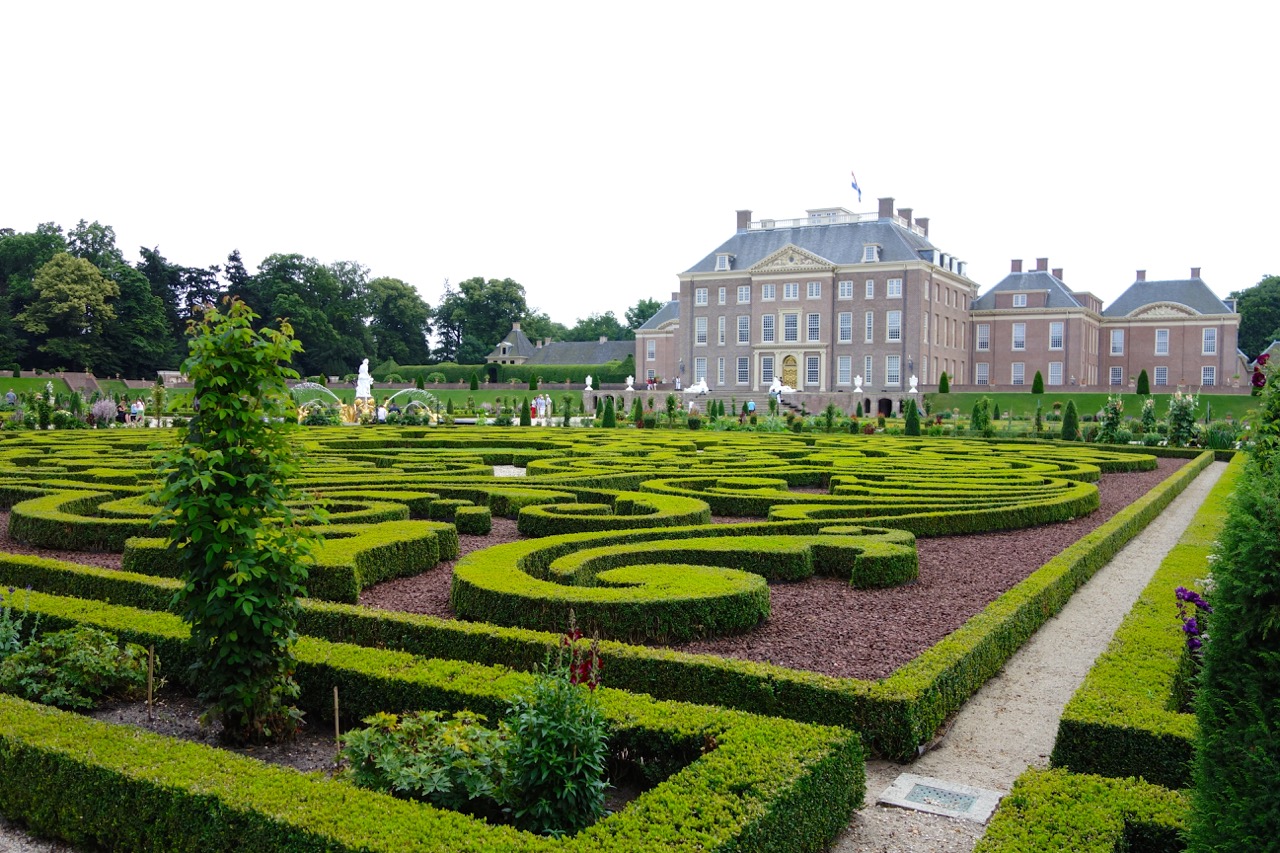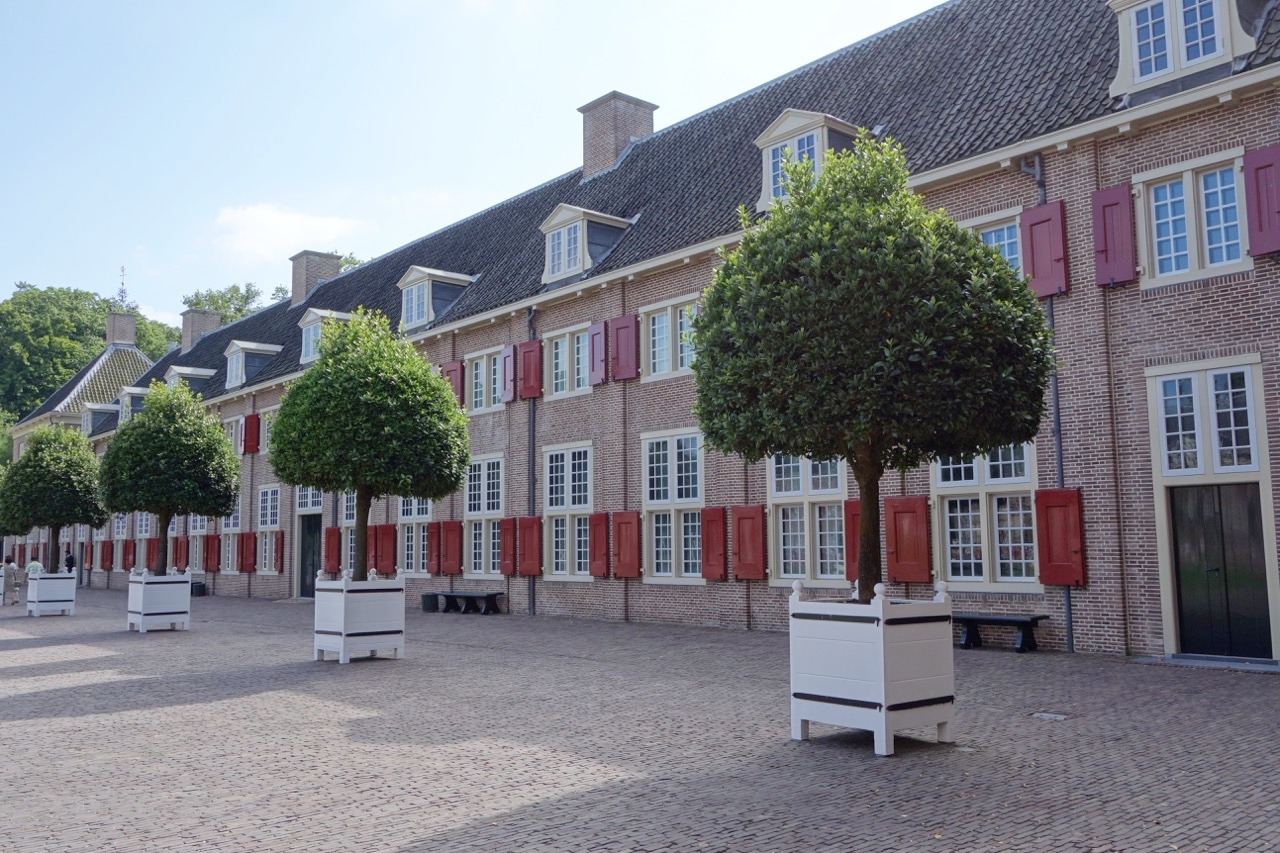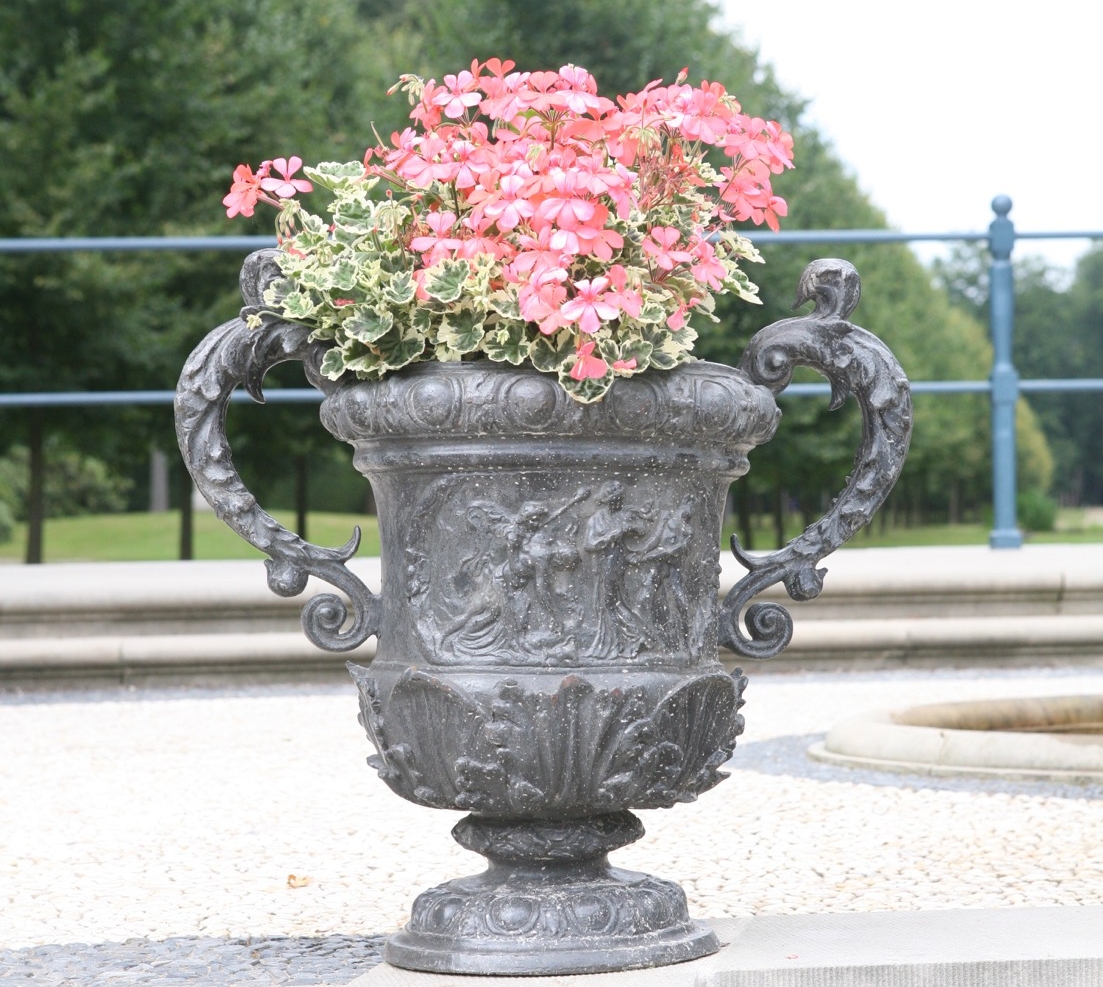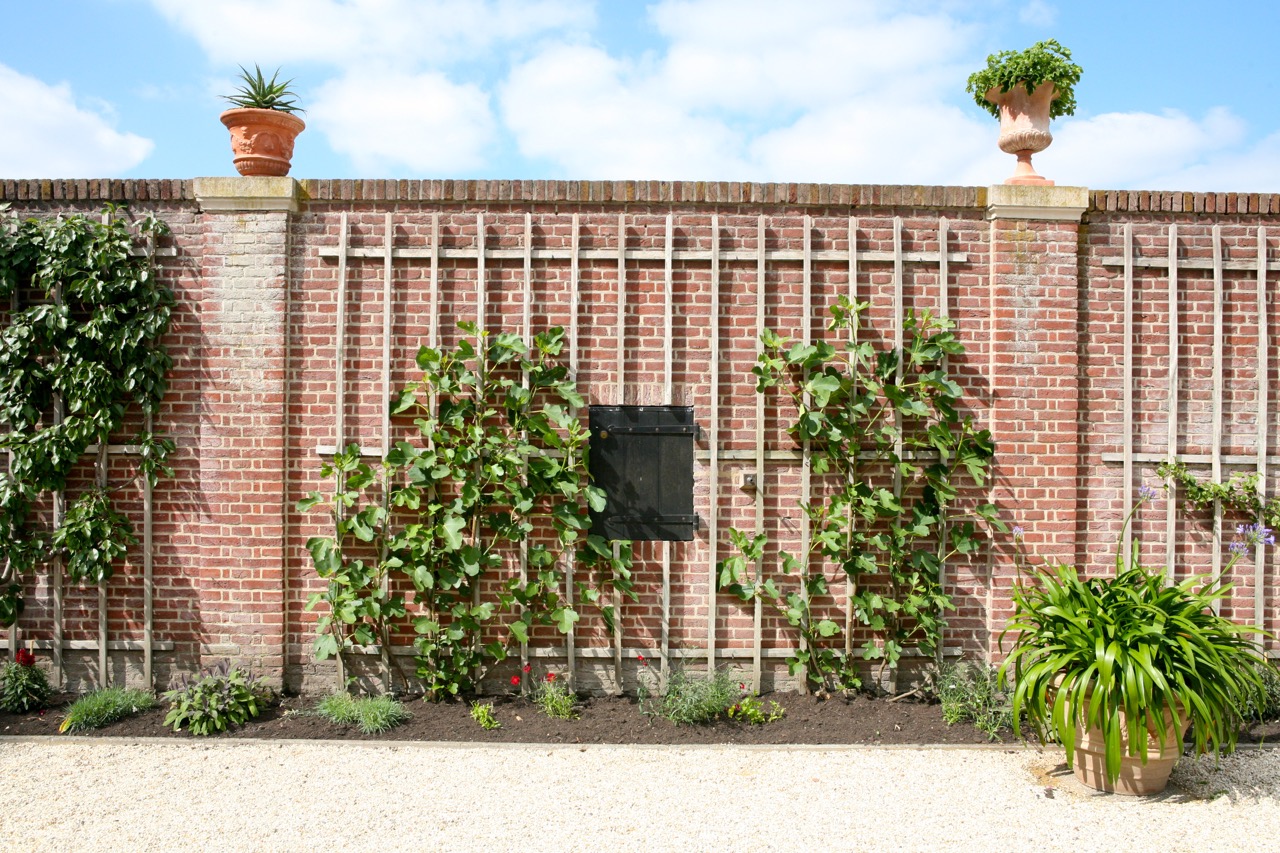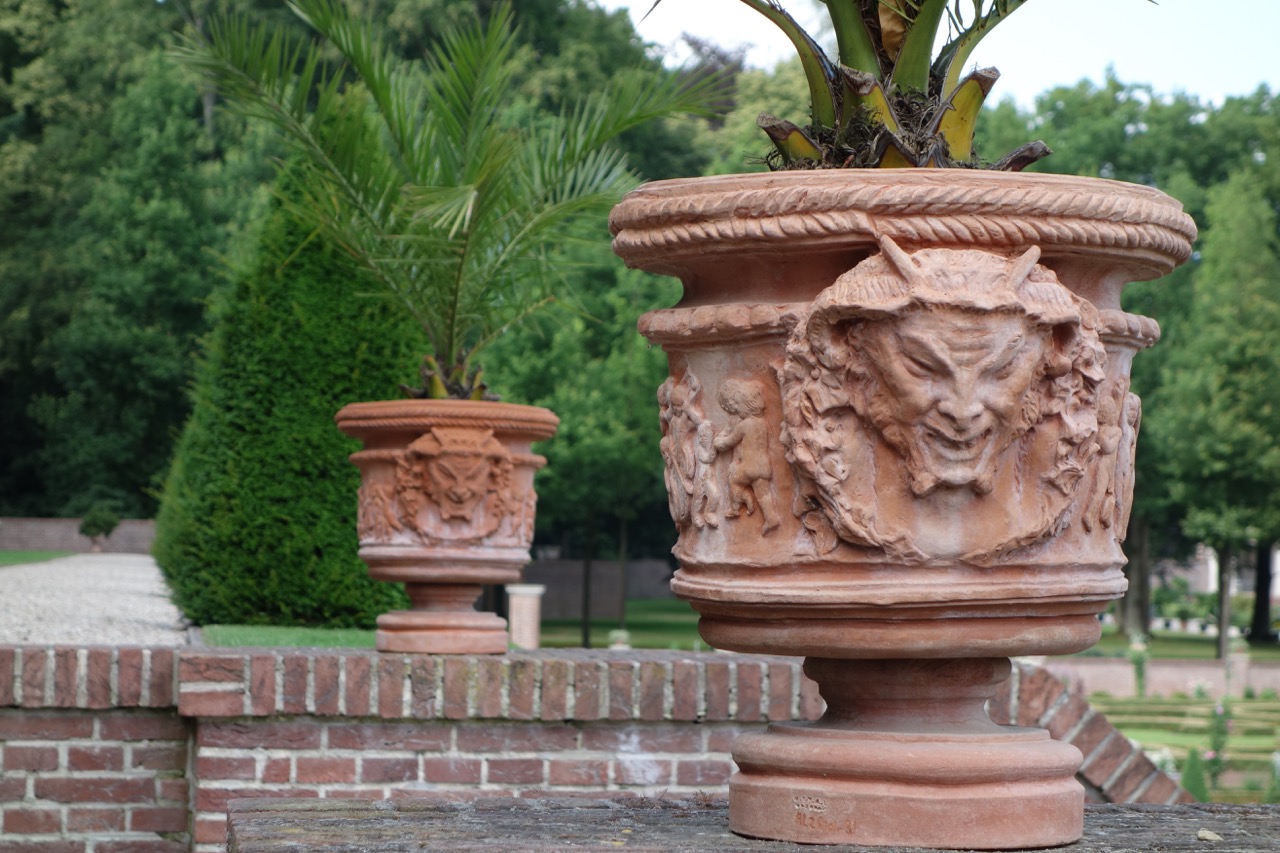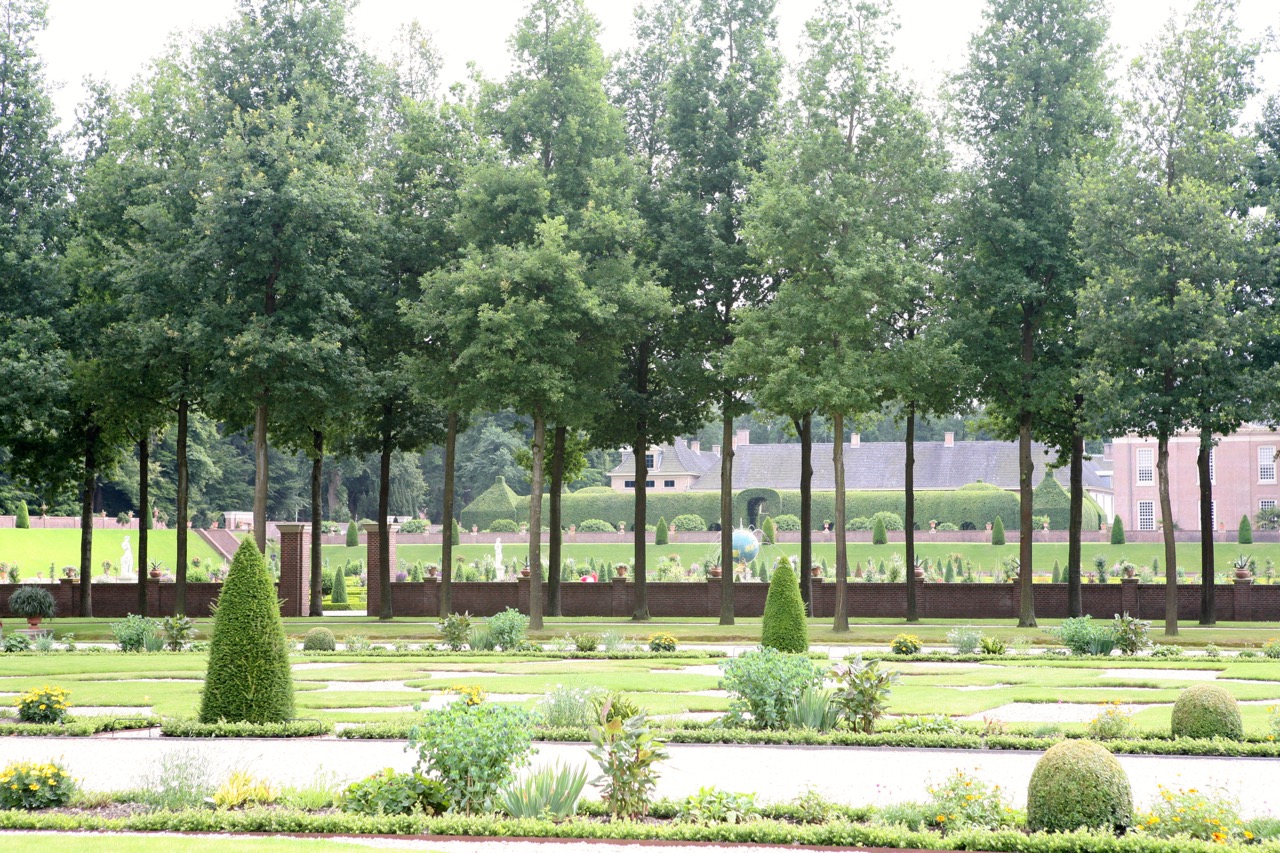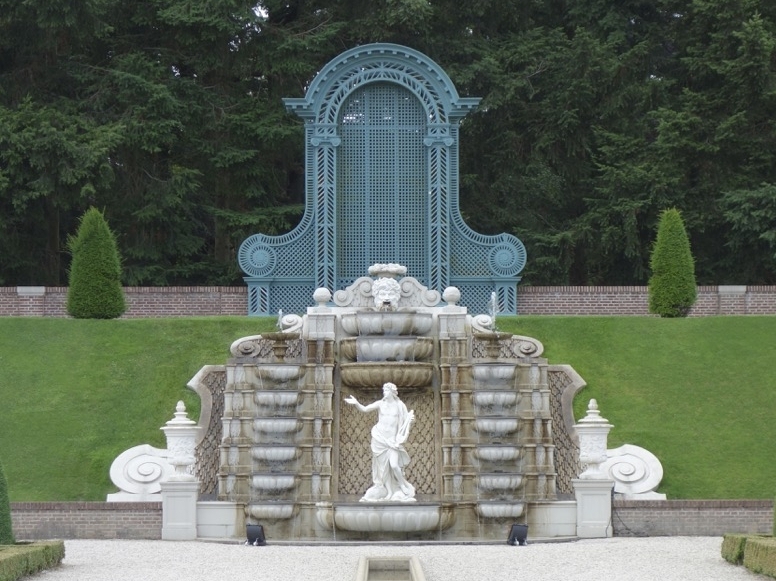To walk around the grounds of the Het Loo Palace in Apeldoorn, the Netherlands is to step back to 1700.
The Palace as seen from the garden today (and as it was designed to look in 1700).
The place was built for William and Mary, the monarchs who ushered in modern, parliamentary Europe. They rose to the throne by signing the Bill of Rights that effectively ended absolute monarchy.
In keeping with garden fashion of that time, the landscape is adorned with statues from Greek mythology. These reference the dawn of western civilization. Venus, the goddess of love, takes a central role. Poseidon, the god of the sea references the Dutch reliance on the sea for its prosperity.
Statues are placed in a formal frame designed in the 1680’s by mathematician Daniel Marot. A strong central axis extends from the house; symmetrical parterres are planted on either side as laid out by Christiaan Pieter van Staden. Espaliered trees cover brick walls. Terra cotta and lead planters provide decoration.
It is so authentic that William or Mary might be around any corner.
Looks can be deceiving. Het Loo is actually a new garden meant to look old. An amazing re-creation of a place destroyed by changes in tastes.
In the 1800’s, European formal gardens fell out of favor. Everyone wanted a landscape inspired by paintings of rural countryside. All over Europe, landowners replaced geometry, axes, and symmetry with picturesque, nature inspired gardens. At Het Loo, the formal gardens were buried in 1806.
When the palace was going to open to the public in the 1980’s, it was decided to recreate Het Loo’s original Marot and van Staden design. First, workers uncovered the foundations of the waterworks and some of the parterres. In 2008 the upper gardens were re-built, and just a few years ago, the lower gardens were completed.
The process was labor intensive. The scroll patterns were traced onto large sheets and pinned together on site. Flexible edging material was put in to define planting areas and paths. Then boxwood, Japanese holly, and juniper were planted to complete the installation. For the more delicate patterns a metal fabricator created planting trays to keep the lines sharp. Check out this short video to learn more.
Original water works foundations were uncovered in the 1980's.
If you are thinking about creating your own new old garden, this landscape is full of inspiration. Thanks to good documentation, the original design could be referenced. Brickwork matches that used on the house, and crushed stone used for the pathways would have been typical. Classical planters and ornamentation, lattice work, and plant material from the period reinforce the design.
In case you missed it, check out more posts about this garden including the time I visited during a winter snow storm.
Anyone else working on a new old garden?
Queen Mary II and King William III
by Wallerant Vaillant, after Unknown artist mezzotint, 1677. c. National Portrait Gallery, London.

